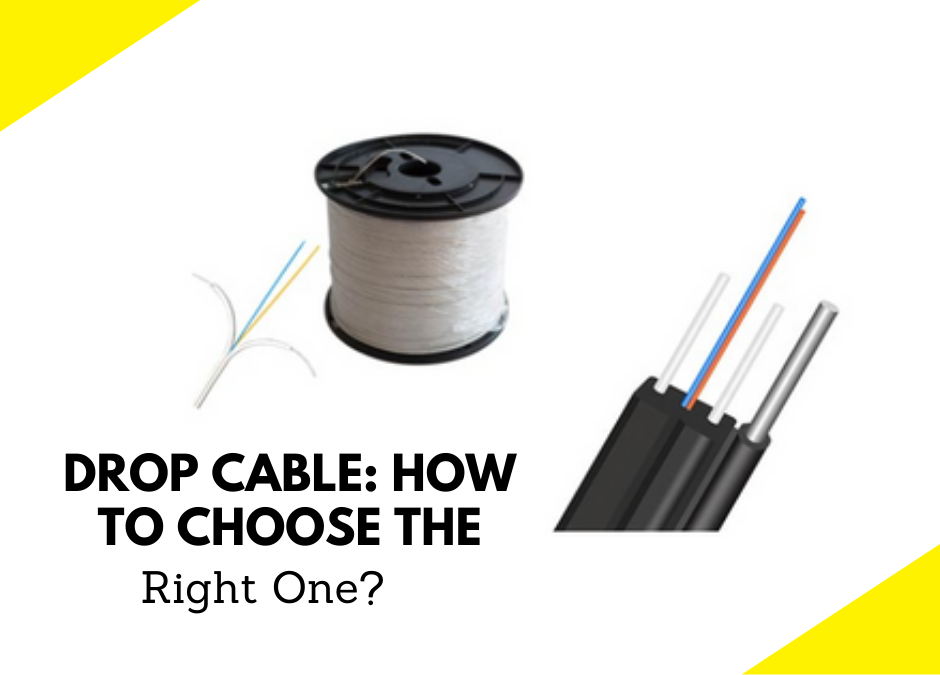
What are Drop Cables?
Drop cable also known as transceiver cables, is a cable used for connecting the computer network’s interface card (NIC) to a transceiver attached to a thicknet cable.
Drop cables allow computers to be easily disconnected and reconnected from the network so that users can easily move them around in their rooms. Usually, drop cables are required because horizontal cabling attaches patch panels in wiring closets terminals at wall plates in the work areas, but computers in the work areas are distributed throughout the entire room.
In a stable networking configuration, wall plates could be located on the floors and very short drop cables might be used to connect the computers to the network.
Drop cables are an important part of FTTH networks, they are used in forming the final external link between subscriber and the feeder cables. The FTTH drop cable termination or interconnect solutions directly affect the network’s reliability, operational flexibility, and economics of FTTH deployment.
Types of Optical Cables
Optical drop cable works as the direct link from the service provider distribution network to the subscriber. Check the below following cable designs to select the most suitable for your requirement.
Flat Drop Cable
Flat drop cable usually consists of a polyethylene jacket, several fibers, and two dielectric strength members to give high crush resistance. Fiber drop cables usually contain one or two fibers, however, you can also easily find drop cables with fiber counts up to 12 or more.
Figure-8 Optical Drop Cable
Figure-8 optical drop cables consist of two distinct subcomponents. A central tube cable is fixed to a steel wire. This cable’s design is to combine the installation of the messenger wire and optical cable into a single process. They are typically used in aerial applications.
All-dielectric Optical Drop Cable
All-dielectric optical drop cables have optical fibers placed in a centrally located buffer tube. This drop cable design supports direct buried, conduit, and aerial self-support applications. The all-dielectric designs are most commonly used for optical drop types in today’s time.
Armored Optical Drop Cable
Armored optical drop cables also have optical fibers placed in the centrally located buffer tube. However, a protective metallic foil surrounds the buffer tube and provides an additional protective barrier for the optical fibers.
Toneable Optical Drop Cable
Toneable optical drop cables are composed of two distinct subcomponents. This cable design is used for combining an all-dielectric cable for buried applications with location capability.
Tensile Strength
As you can see there are different types of strength members in the optical drop cables. The strength members are used to ensure that no tensile stress is placed on the optical fibers during and after installations. Though it does not have any physical limitations but, if the tensile forces exceed the physical limitations of the cable it will cause damage to the cable and possibly will break the optical fiber.
Conclusion
To ensure the long-term reliability of FTTH networks, consider the above information to make the right selection of optical cable. If you deal in networking cables and want to have further information about FTTH fiber cables with all the different types of connectors check out http://www.santron.in/drop-cable/
With our expert cabling system solution, you can get a complete solution to build or expand fiber-optic network capacity.
If you have any doubts or queries, feel free to contact us.

